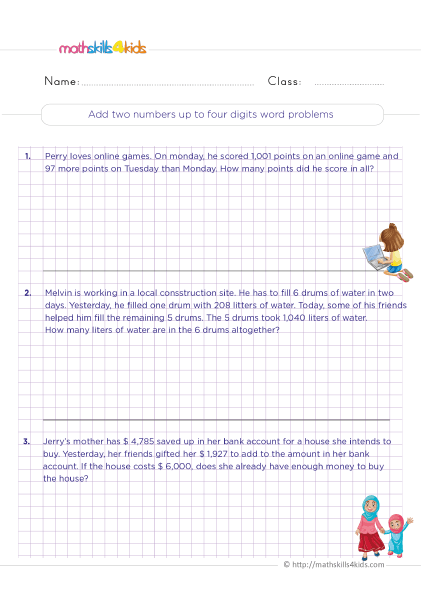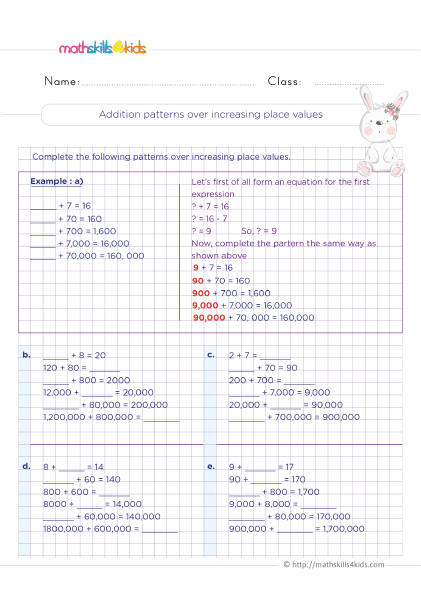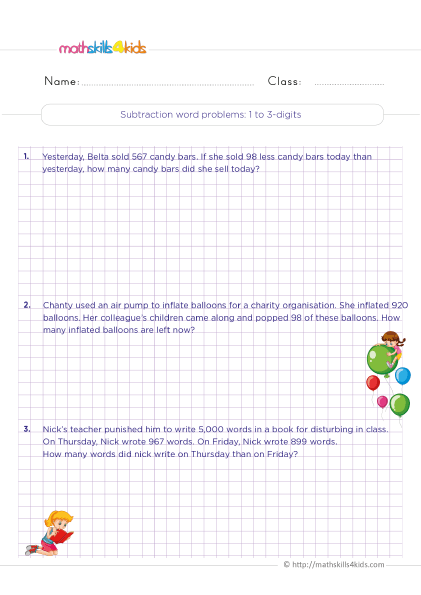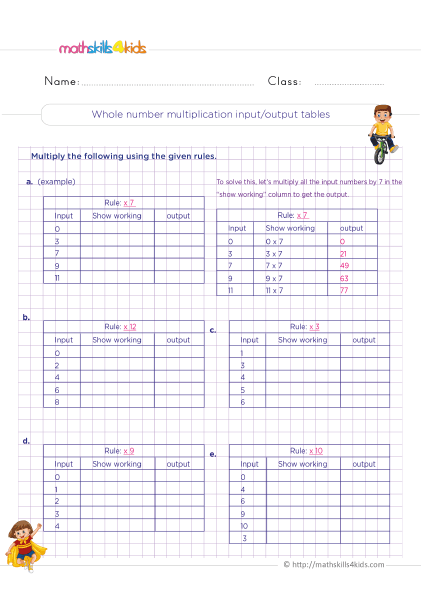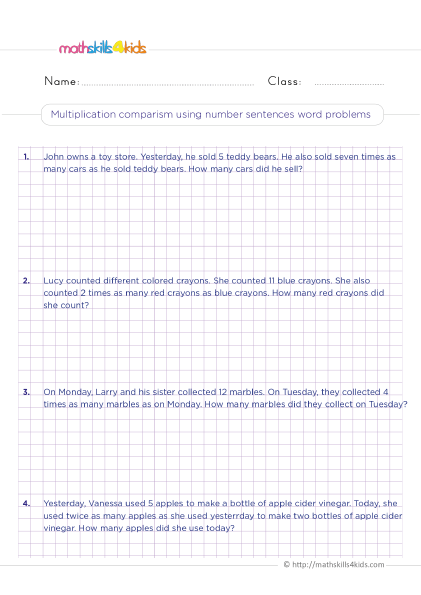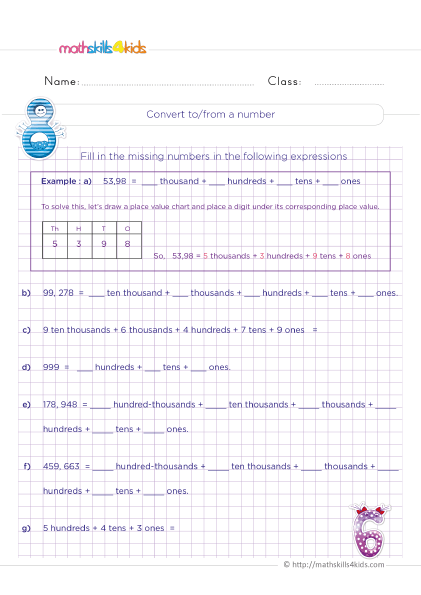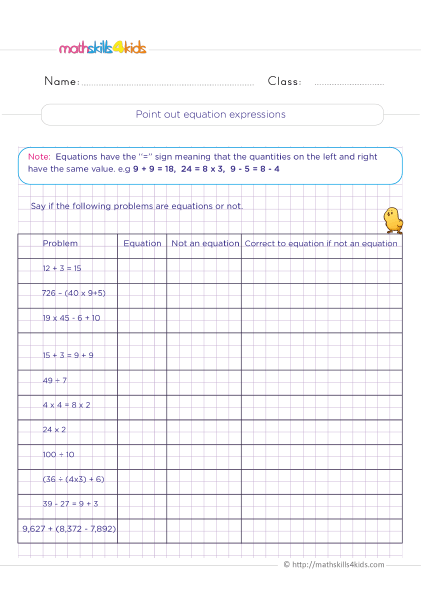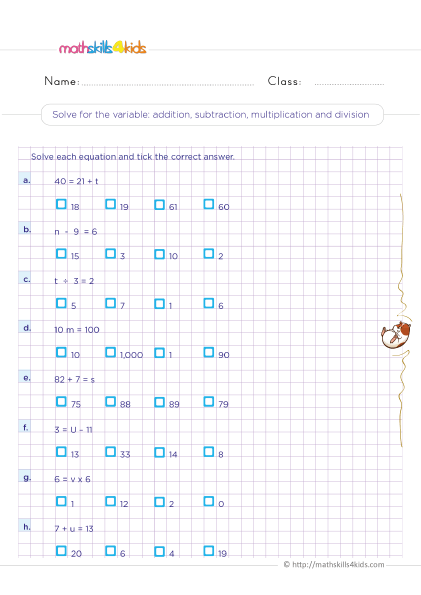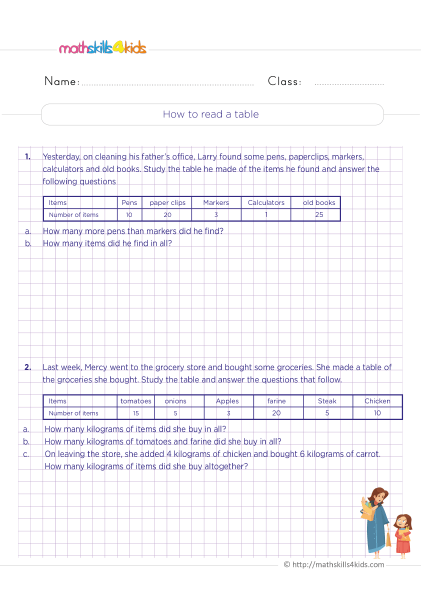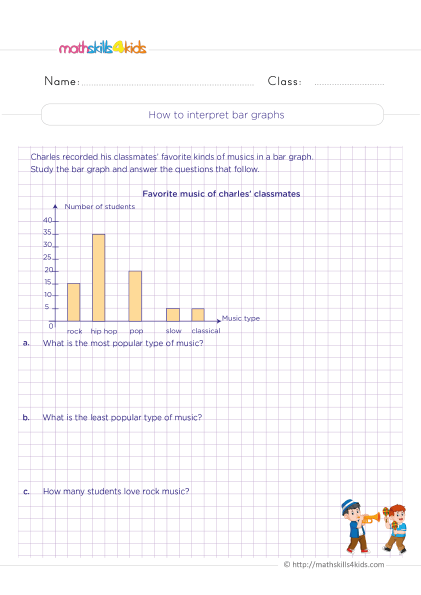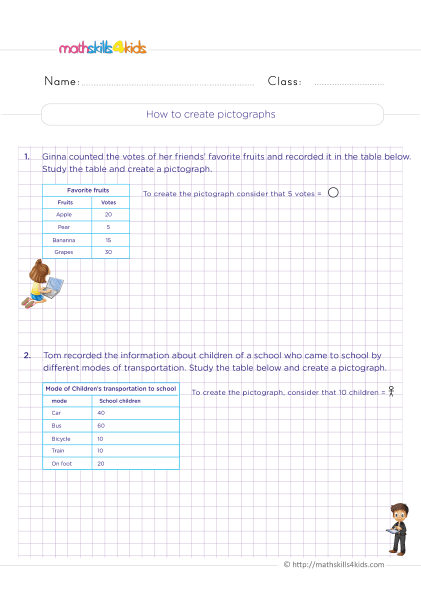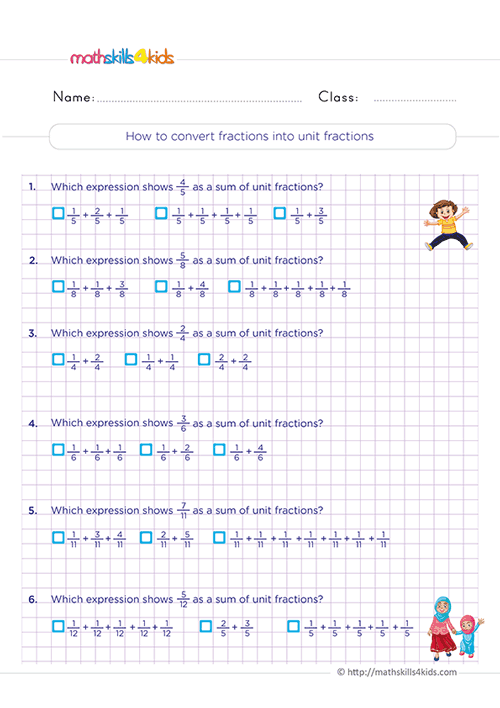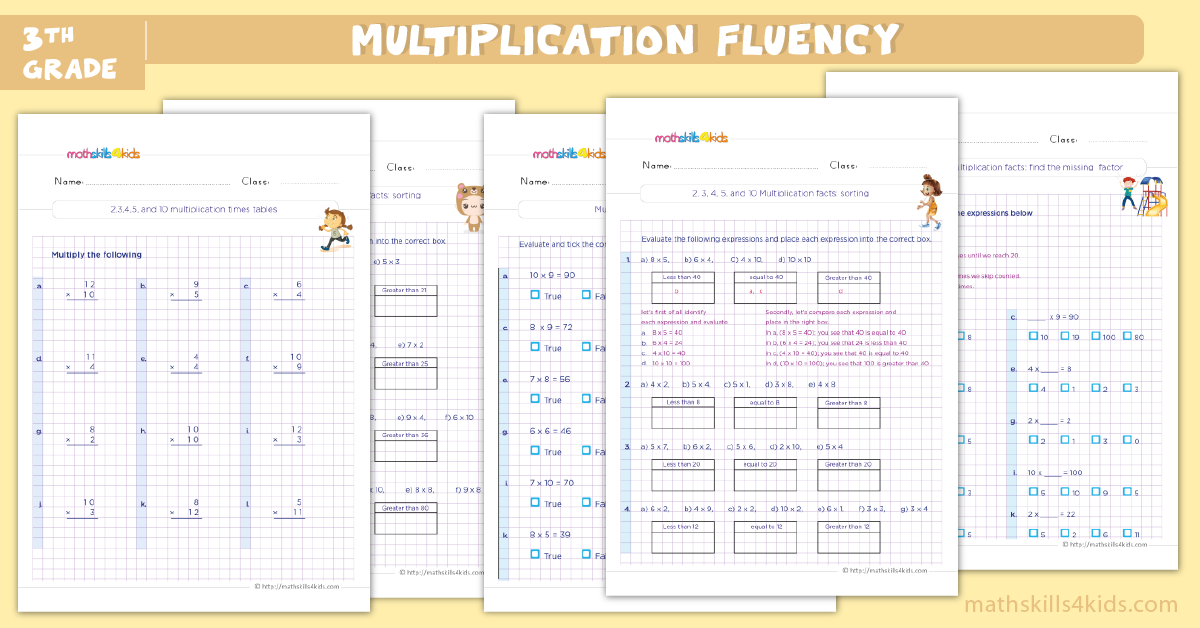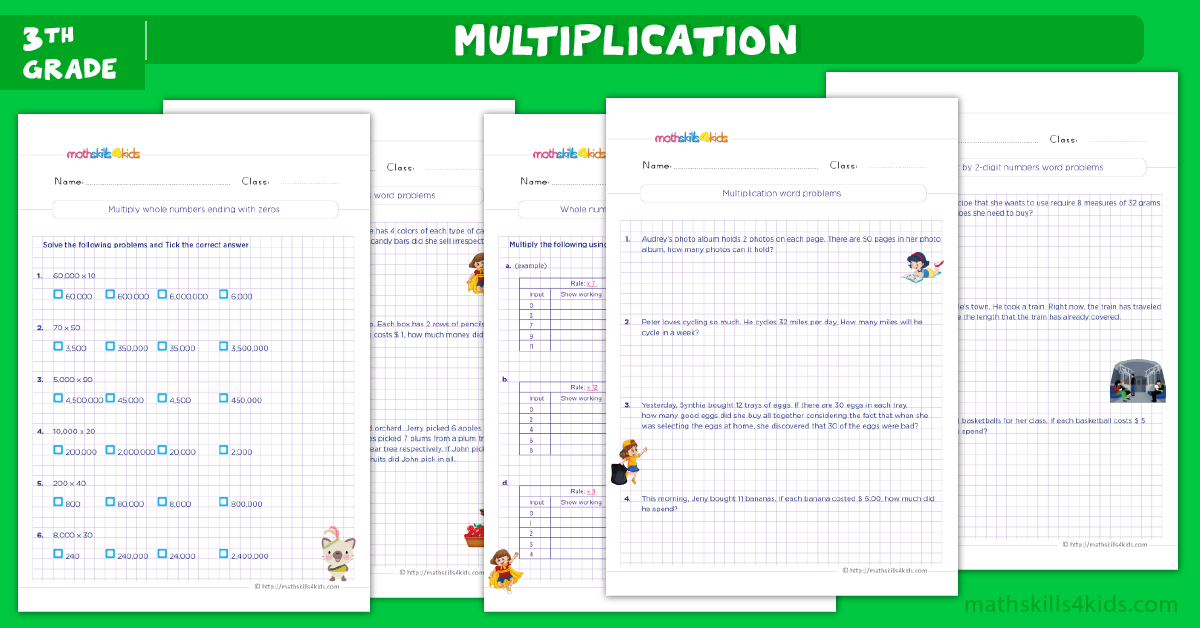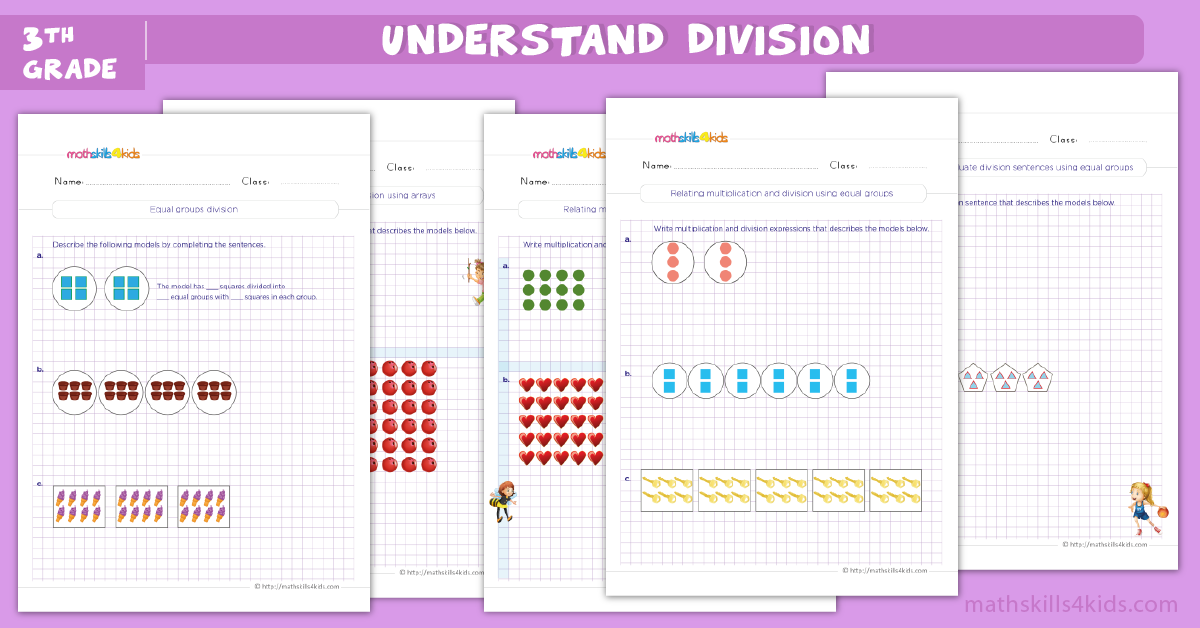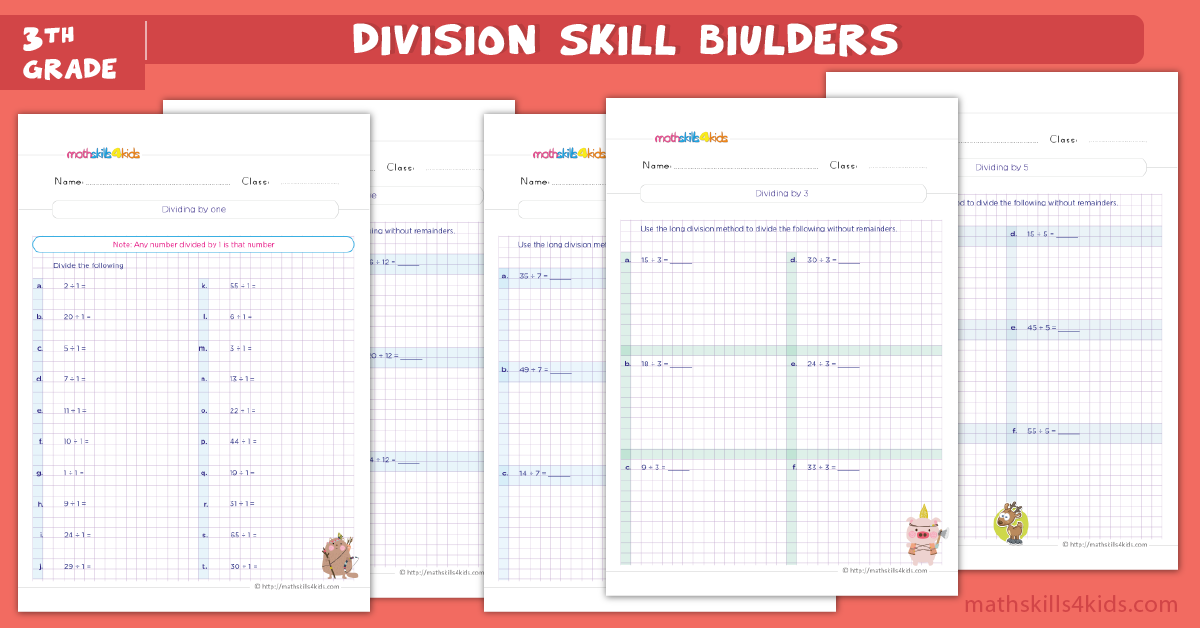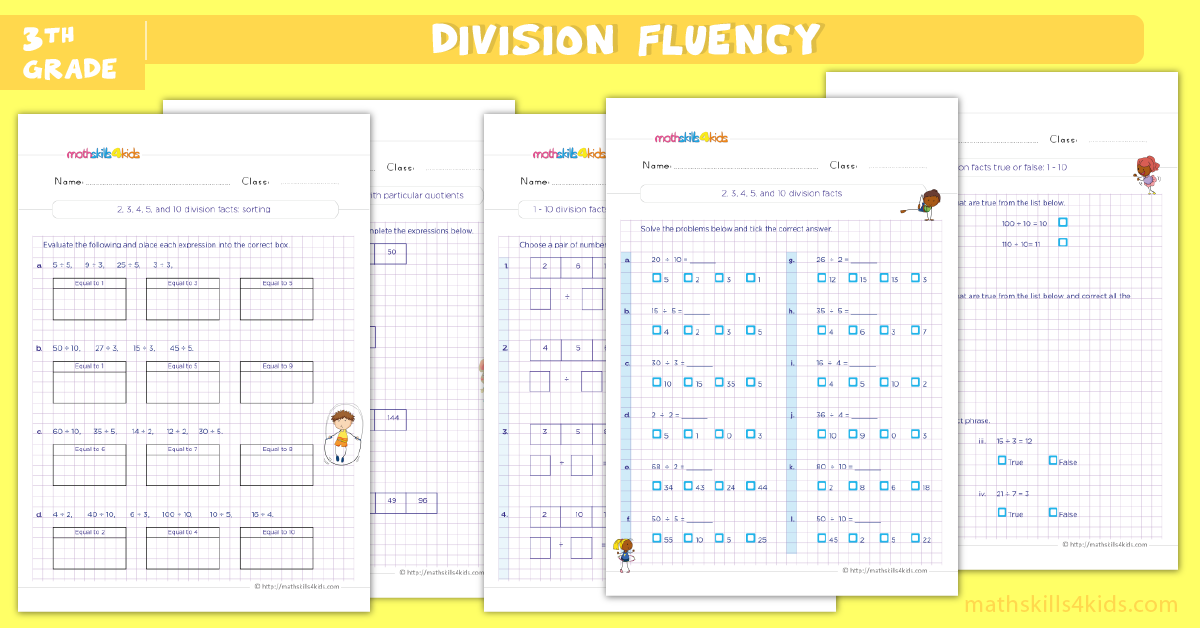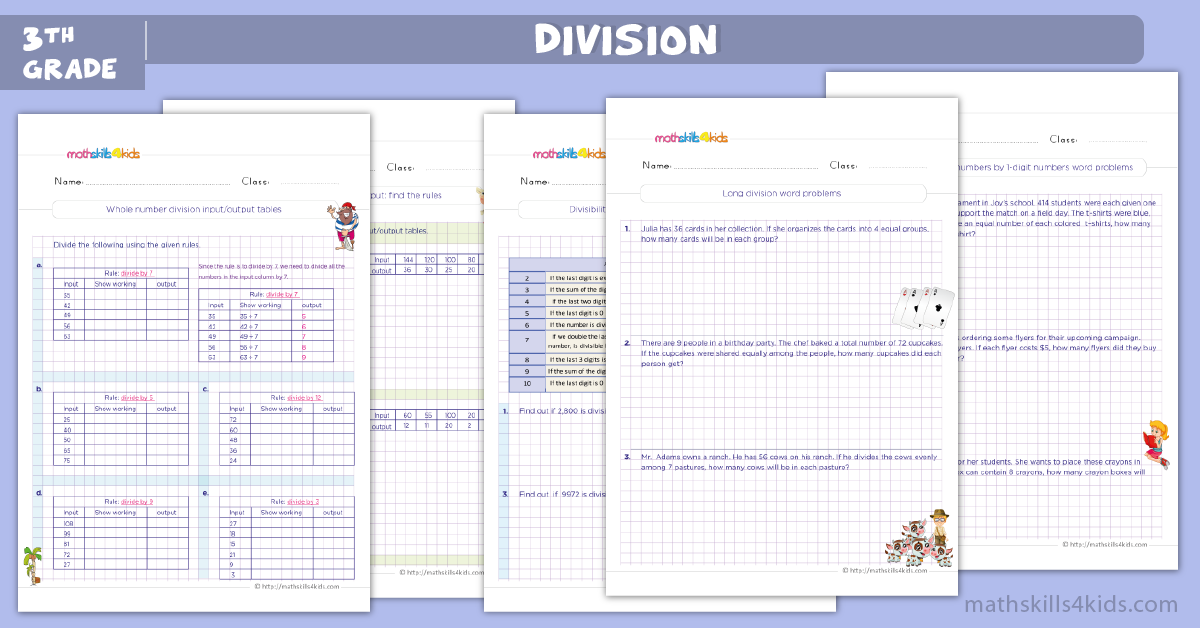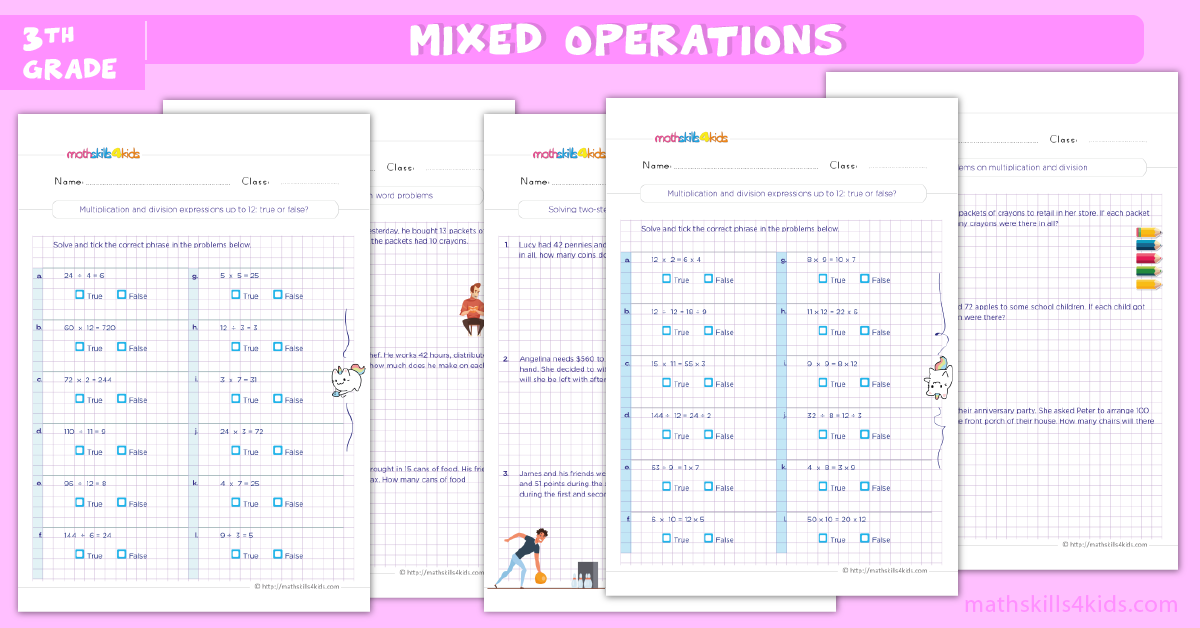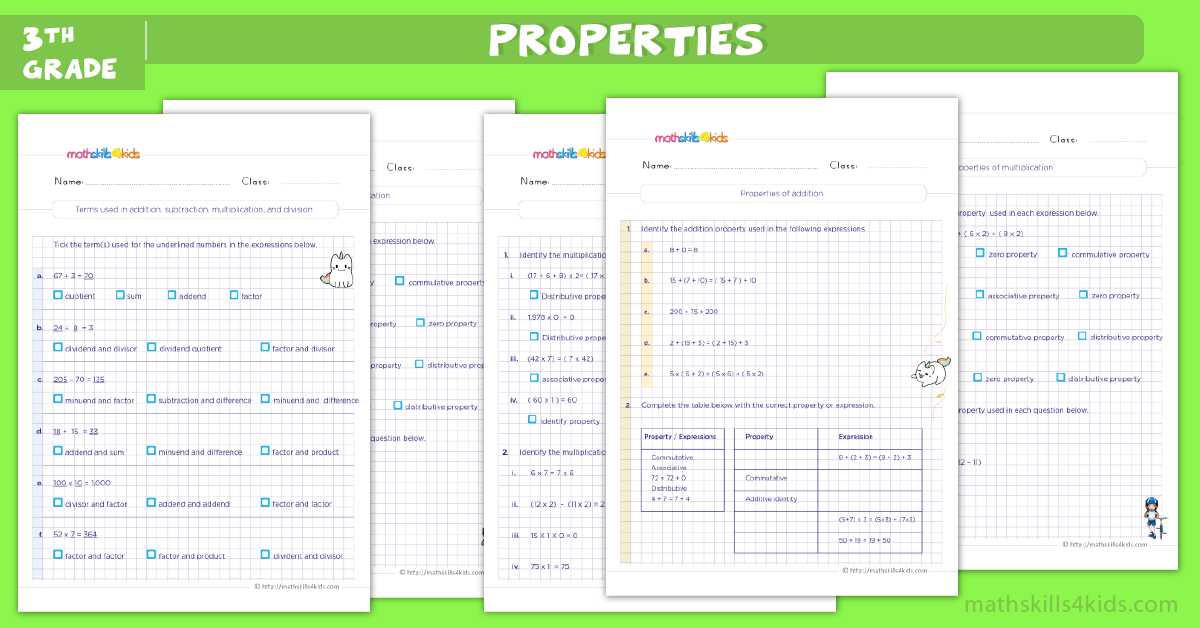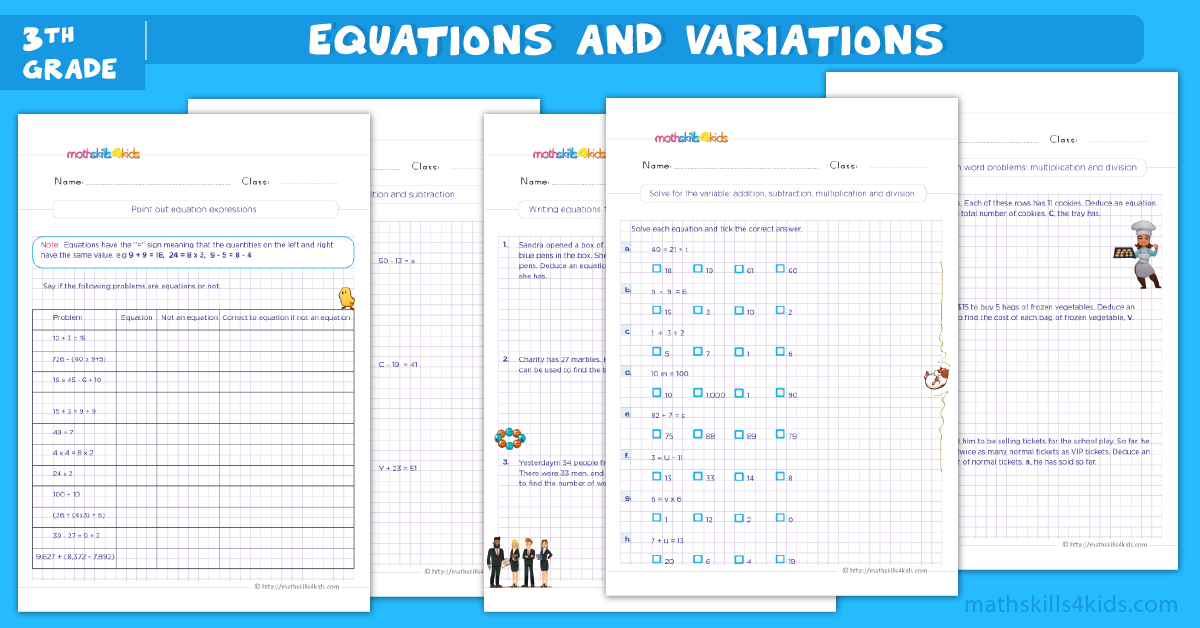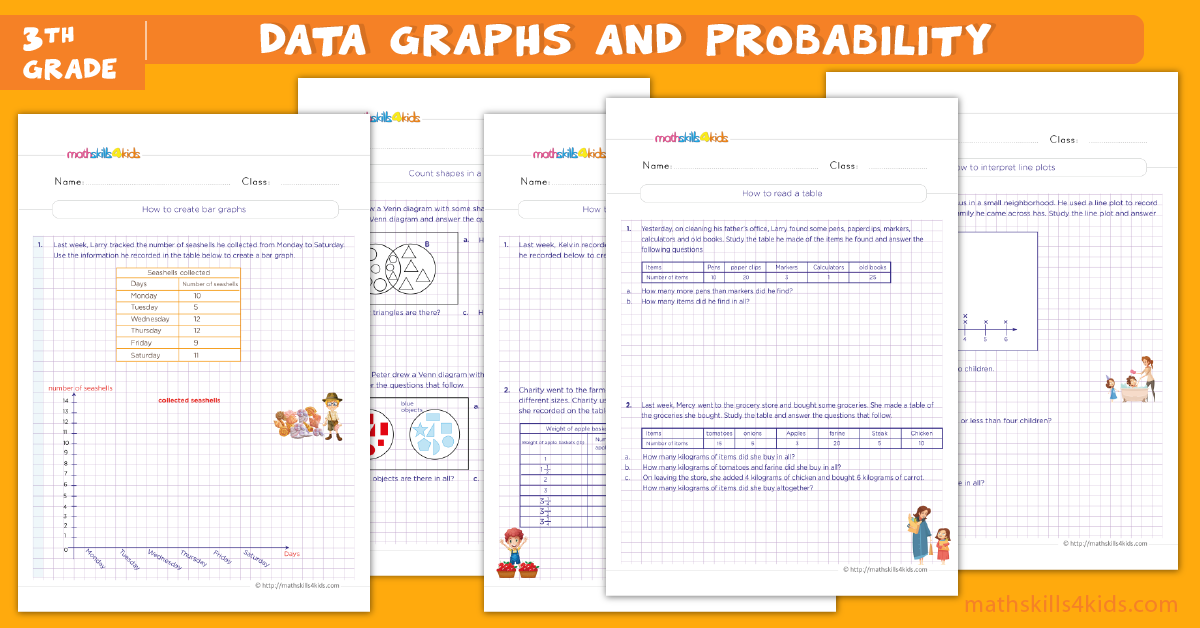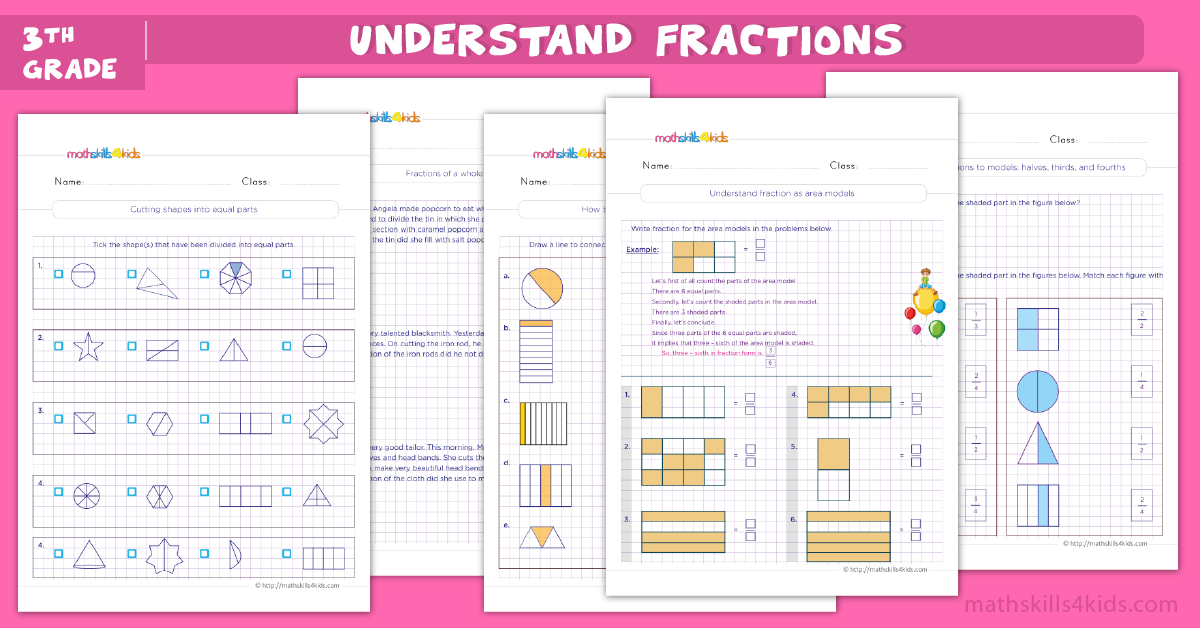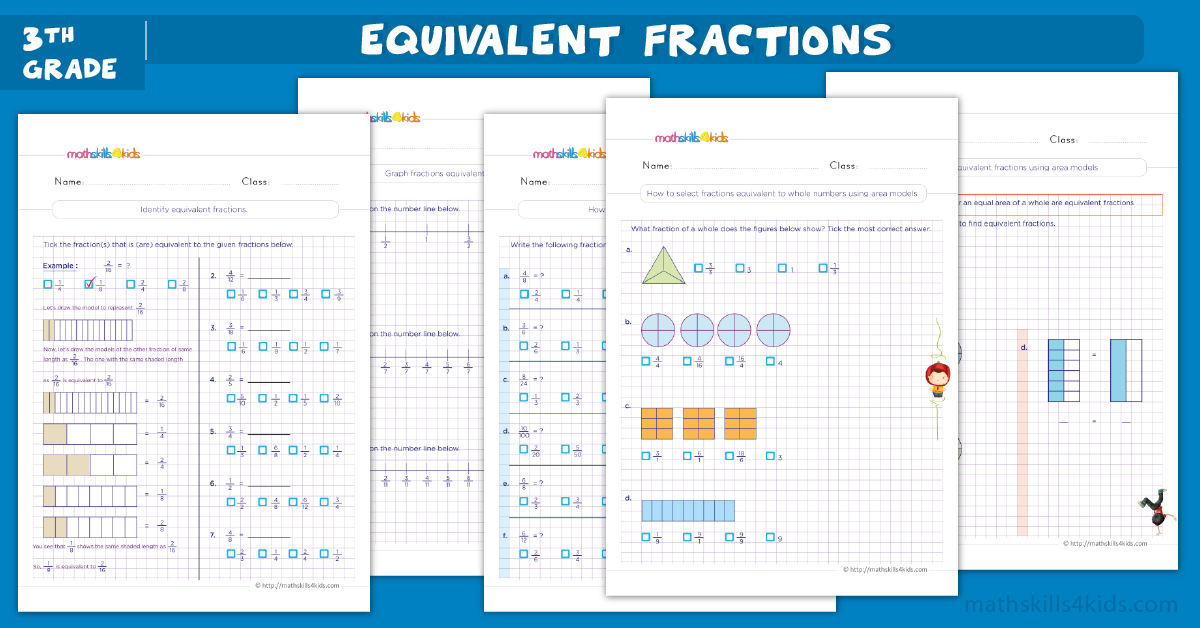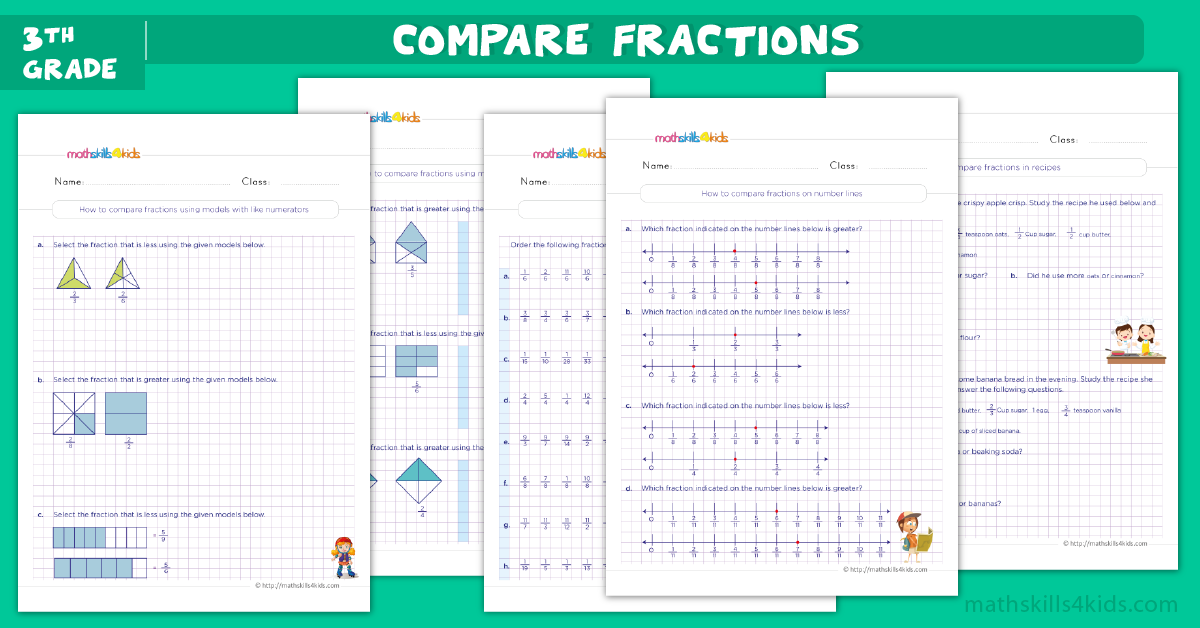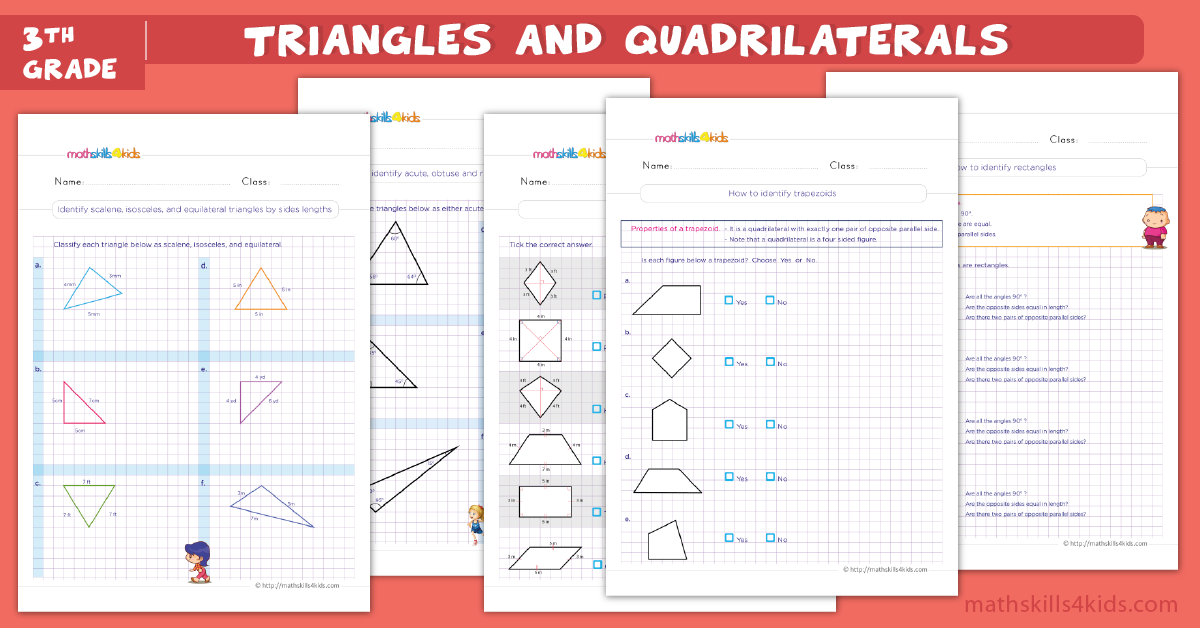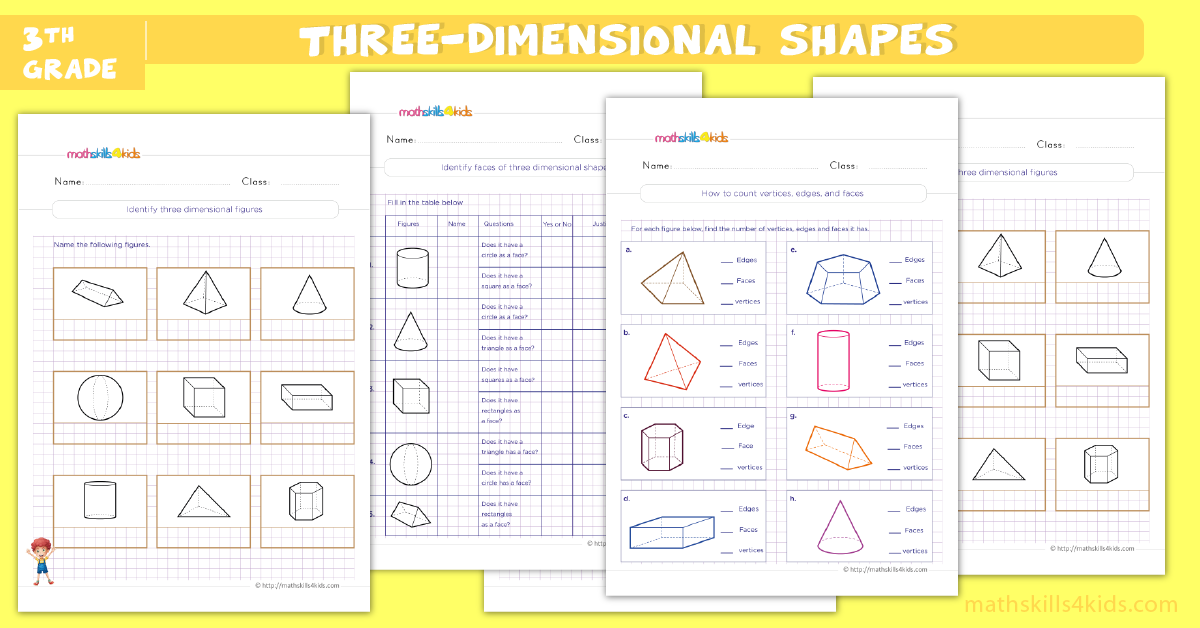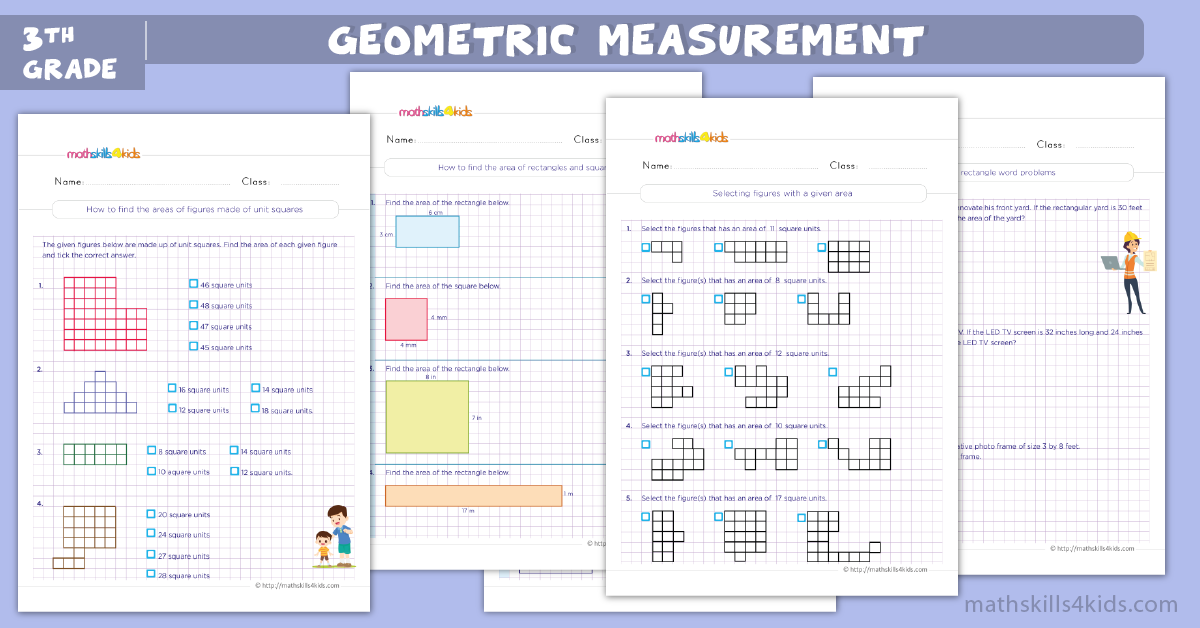3rd Grade math activities for kids: Free games and worksheets
Do you want to make math your 3rd grader's favorite subject? If yes, then enjoy this perfect balance of teaching math with free games and worksheets. In this article, we have designed fun and engaging 3rd Grade math activities you can do with your kids at home or in the classroom.
These activities will help kids practice and master the essential math skills they need to succeed in 3rd grade and beyond. Plus, they will have much fun doing them!
-
Why 3rd Grade Math is Important
Math is a crucial subject that helps kids develop their logical thinking, problem-solving, and reasoning skills. It also prepares them for more advanced math topics in the future, such as algebra, geometry, and calculus.
3rd-grade math is essential because it introduces kids to key concepts and operations that they will use throughout their academic and everyday lives. These include:
- Multiplication and division
- Fractions and decimals
- Place value and rounding
- Bar graphs and pictographs
- Geometry and measurement
By learning these topics in 3rd grade, kids can perform more complex calculations, analyze data, compare and contrast numbers, and understand shapes and their properties.
-
-
Number and compapring
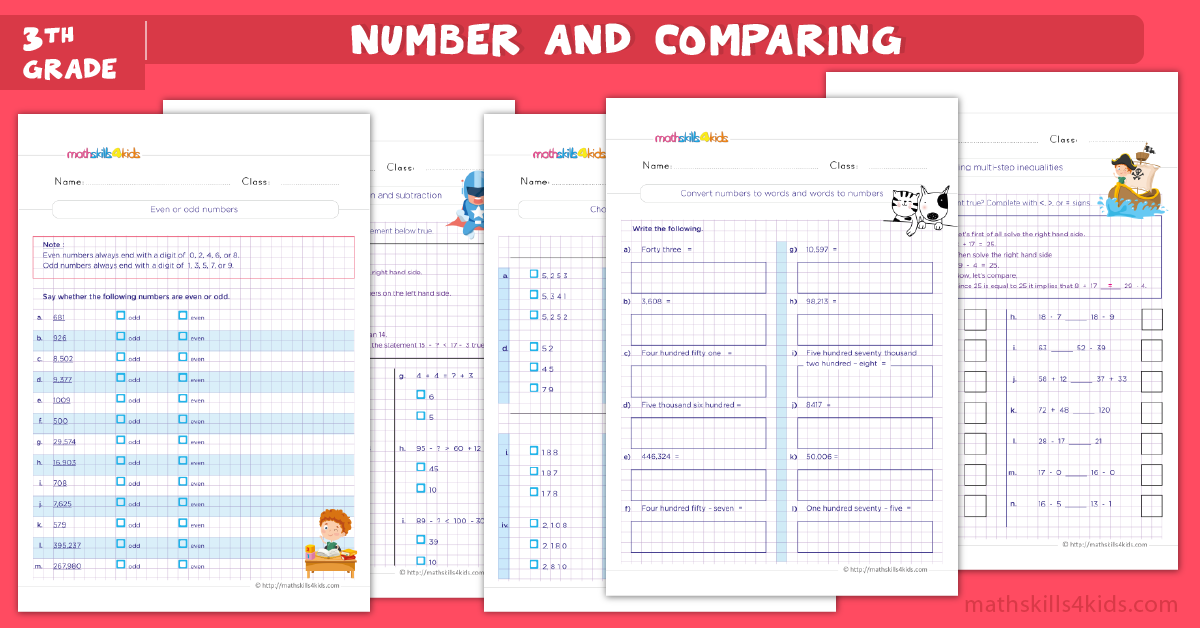
-
Place value
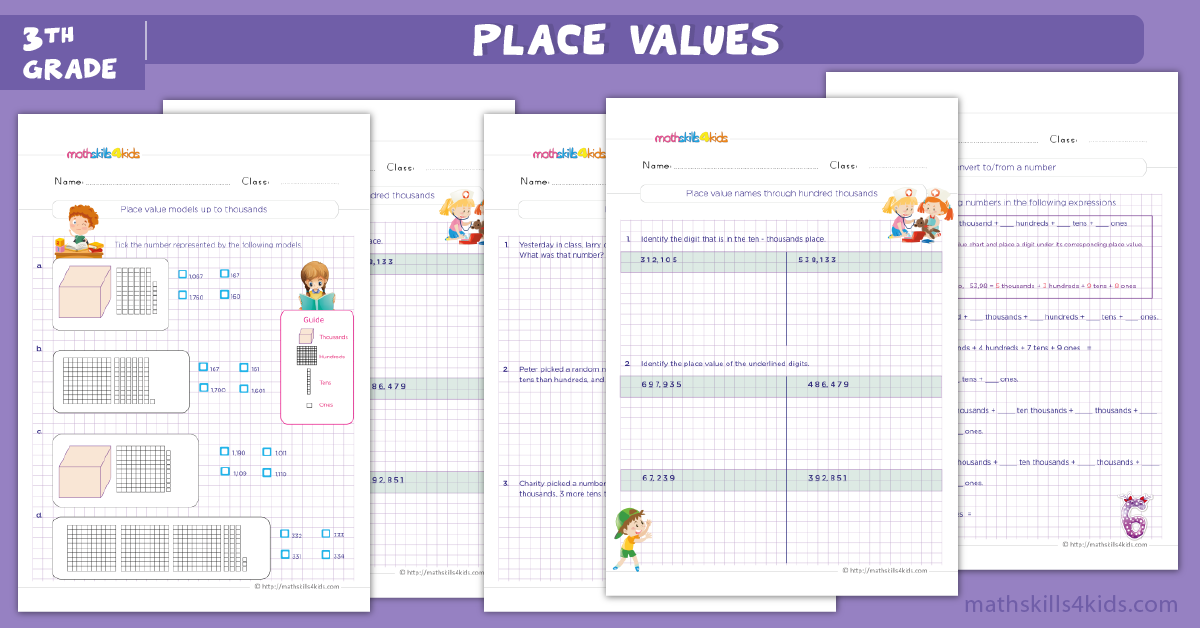
-
Addition
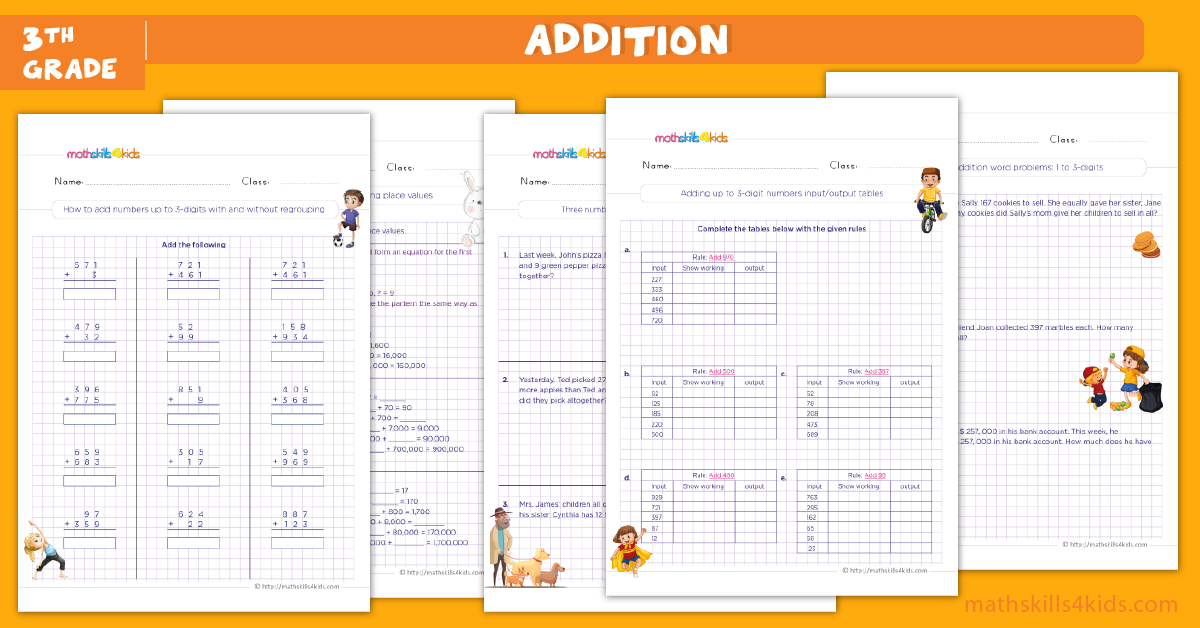
-
Subtraction
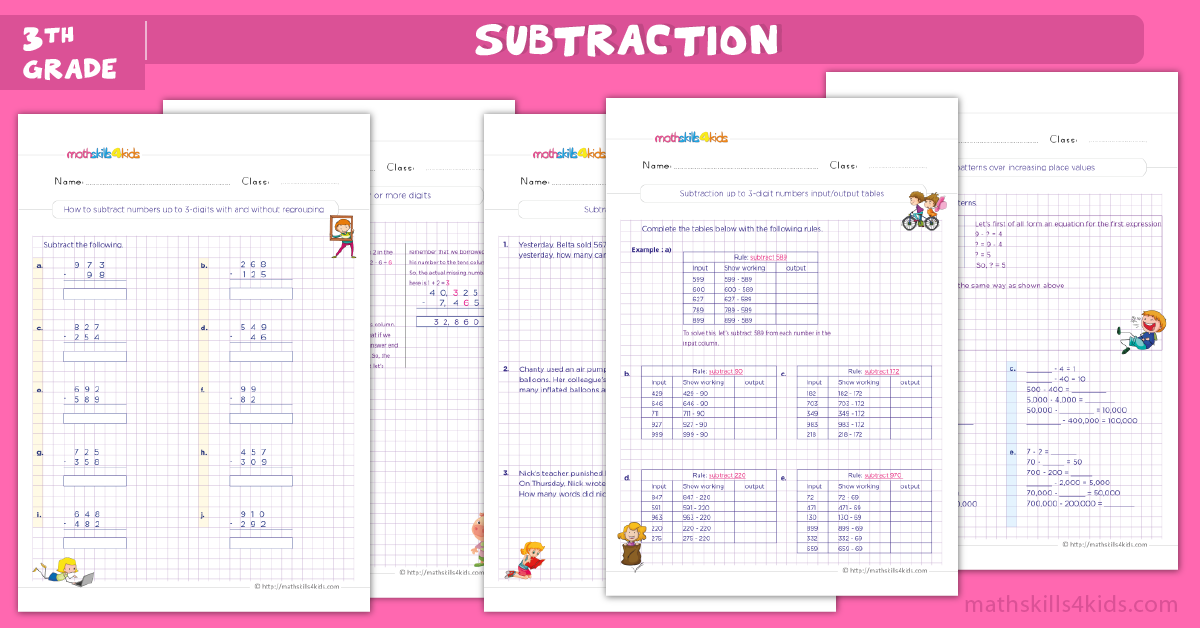
-
Understand multiplication

-
Multiplication skills builders
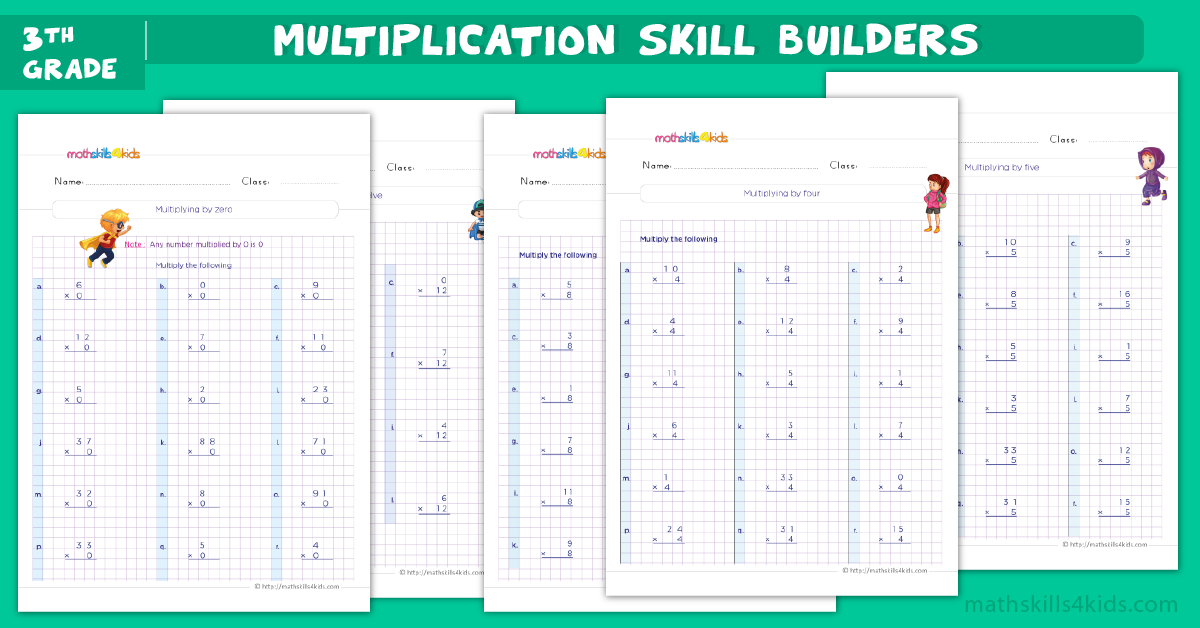
-
Some fun and educational math games for 3rd Graders
One of the best ways to help kids learn math is to make it fun and interactive. Games are a great way to do that because they motivate kids to practice their math skills while having fun. They also foster a positive attitude towards math and boost their confidence and self-esteem.
Here are some examples of fun and educational math games that you can play with your 3rd graders:
Multiplication Bingo
This game is a great way to help kids practice their multiplication facts in a fun way. You will need bingo cards with numbers from 0 to 100, some bingo chips or markers, and a caller.
To play, the caller will randomly choose a multiplication problem (such as 6 x 7) and announce it to the players. The players will then look for the answer (42) on their bingo cards and mark it with a chip or marker. The first player to get five answers in a row (horizontally, vertically, or diagonally) wins the game.
Using larger numbers or mixed operations (such as 8 x 9 + 4) can make this game more challenging.
Fraction Pizza
This game is a delicious way to help kids learn about fractions. You will need some pizza slices (real or paper), some toppings (cheese, pepperoni, mushrooms, etc.), and some plates.
To play, divide the pizza slices into equal parts (such as halves, thirds, fourths, etc.) and label them with the corresponding fractions. Then, let the kids choose their toppings and place them on their pizza slices. For example, if a kid chooses cheese and pepperoni, they can put cheese on one half of their pizza slice and pepperoni on the other half.
Then, ask the kids to write down the fractions representing their pizza slices. For example, if a kid has cheese on one half of their pizza slice and pepperoni on the other half, they can write 1/2 cheese + 1/2 pepperoni. You can also ask them to compare their fractions with other kids' fractions using symbols such as <, >, or =.
Shape Hunt
This game is a fun way to help kids learn about shapes and their attributes. You will need some shapes (such as circles, squares, triangles, rectangles, etc.), some tape or glue, and some paper.
To play, hide the shapes around the room or outside. Then, give the kids some clues about where to find them. For example, you can say, "Look for a shape with four equal sides" or "Look for a shape with three corners." The kids will then search for shapes matching the clues and return them to you.
Then, ask the kids to name the shapes they found and describe their attributes. For example, they can say, "I found a square. It has four equal sides and four right angles," or "I found a triangle. It has three sides and three corners". You can also ask them to sort the shapes into categories based on their attributes (such as the number of sides, angles, etc.).
-
Some engaging math worksheets for 3rd graders
Another way to help kids learn math is to provide them with some worksheets they can work on independently or with your guidance. Worksheets are a great way to reinforce what they have learned in class or through games. They also help them practice their math skills and check their understanding.
Here are examples of some engaging math worksheets that you can use with your 3rd graders:
Addition and subtraction word problems
This worksheet helps kids practice addition and subtraction skills by solving word problems. The word problems involve real-life situations, such as buying groceries, going to the movies, or sharing candies. The kids must read the word problems carefully, identify the relevant information, and write and solve the equations.
For example, the one-word problem is:
"Lisa bought 12 apples and 8 oranges at the store. She gave 4 apples and 2 oranges to her friend. How many fruits does she have left?"
The kids have to write and solve the equation:
12 - 4 + 8 - 2 = ?
The answer is 14 fruits.
Multiplication and division worksheets
This worksheet helps kids practice their multiplication and division skills by solving equations. The equations involve single-digit or two-digit numbers. The kids must write and solve the equations using strategies such as repeated addition, skip counting, arrays, or grouping.
For example, one equation is:
24 ÷ 6 = ?
The kids can use different strategies to solve it, such as:
- Repeated subtraction: 24 - 6 - 6 - 6 - 6 = 0
- Skip counting: 6, 12, 18, 24 (4 times)
- Arrays: 4 rows of 6 or 6 columns of 4
- Grouping: 24 objects can be grouped into 6 groups of 4 or 4 groups of 6
The answer is 4.
Place value and rounding
This worksheet helps kids practice their place value and rounding skills by working with numbers up to thousands. The kids have to identify the value of each digit in a number, write the number in different forms (such as expanded form or word form), compare and order numbers using symbols (such as <, >, or =), and round numbers to the nearest ten or hundred.
For example, one question is:
"Write the number 3,456 in expanded form."
The answer is:
3,000 + 400 + 50 + 6
Bar graphs and pictographs
This worksheet helps kids practice data analysis using bar graphs and pictographs. The kids must read the graphs carefully, answer questions about them, and draw their own graphs based on the data.
For example, one question is:
"Look at the bar graph below. It shows how many books four students read in a month. How many books did Anna read?"
The answer is:
Anna read 8 books.
Fractions and decimals activities
This worksheet helps kids practice their fractions and decimals skills by working with different representations of them. The kids have to identify equivalent fractions and decimals, compare and order fractions and decimals using symbols (such as <, >, or =), add and subtract fractions and decimals with like or unlike denominators, and convert fractions to decimals and vice versa.
For example, one question is:
"Write the fraction equivalent of the decimal 0.75."
The answer is:
0.75 = 75/100 = 3/4
Geometry and measurement exercises
This worksheet helps kids practice their geometry and measurement skills by working with different shapes and units of measurement. The kids have to identify different types of shapes (such as polygons, quadrilaterals, triangles, etc.), name their attributes (such as sides, angles, vertices, etc.), find their perimeter and area, measure their length, width, height, weight, capacity, or temperature using standard or metric units, and convert between different units of measurement.
For example, one question is:
"Find the perimeter of a rectangle that has a length of 12 cm and a width of 8 cm."
The answer is:
Perimeter = (length + width) x 2
Perimeter = (12 + 8) x 2
Perimeter = 20 x 2
Perimeter = 40 cm
Problem-solving challenges
Challenging your kids with fun and creative problem-solving tasks is one of the best ways to help them develop their math skills and confidence. These can be puzzles, riddles, logic games, or real-life scenarios requiring math thinking.
For example, you can ask your kids to figure out how many cups of flour they need to make a cake or how long it will take them to walk to the park if they go at a certain speed.
You can also find some online resources that offer problem-solving challenges for 3rd graders, such as Math Playground or Math Blaster.
These websites have interactive games and activities that cover various math topics and skills and provide feedback and hints to help your kids along the way.
-
How to help your kids enjoy math
Math can be a fun and rewarding subject for kids if they are given the proper support and encouragement. Here are some tips on how to help your kids enjoy math and develop a positive attitude toward it:
- Praise their efforts and progress, not just their results. When your kids work hard on a math problem or activity, acknowledge their effort and perseverance, and celebrate their achievements. This will help them build their self-esteem and confidence in their math abilities.
- Show them how math is relevant and useful in everyday life. Math is not just something kids learn at school; it is also something they use in many situations outside the classroom.
For example, you can show your kids how math helps you plan a budget, cook a meal, measure ingredients, tell time, play games, or do sports.
By making these connections, you can help your kids see the value and purpose of math.
- Make math fun and engaging. Math does not have to be tedious; it can also be fun and exciting if you use some creativity and imagination.
You can play math games with your kids, such as card games, board games, dice games, or online games. You can also use math to create art, music, or stories.
For example, you can use geometric shapes to make patterns or designs, fractions to compose songs or rhythms, or numbers to write codes or secret messages.
-
Tips and resources for making math fun for third graders
Math can be a challenging subject for many third graders, but it can also be a lot of fun. Here are some tips and resources for making math fun for your students:
- Use games and puzzles to practice math skills. Games and puzzles can help students develop their logical thinking, problem-solving, and mental math skills. They can also make math more engaging and enjoyable. You can find many online games and puzzles for third graders on sites like; 3rd Grade Math | Free, Online Math Games | Math Playground, Grade 3 - Practice with Math Games, and Games, Books, and Videos for Kids in Grade 3 - Funbrain.
- Incorporate math into everyday activities. Math is everywhere, and you can help your students see the connections between math and the real world. For example, you can use cooking, shopping, sports, or art to teach fractions, decimals, measurement, geometry, and more. You can also ask your students to create their own math problems based on their interests and hobbies.
- Use manipulatives and visual aids to support learning. Manipulatives are physical objects that students can use to explore math concepts and operations. They can help students understand abstract ideas and make math more concrete and hands-on. Some examples of manipulatives are base-ten blocks, counters, dice, dominoes, and tangrams. Visual aids are pictures, diagrams, charts, or graphs that help students visualize math concepts and relationships. They can help students organize information and see patterns and trends.
- Encourage collaboration and communication. Math is not a solitary activity; it is a social one. You can foster a positive math culture in your classroom by encouraging your students to work together, share their strategies, explain their reasoning, and ask questions. You can also use math journals, posters, presentations, or blogs to help your students express their math thinking in different ways.
-
-
Buying is supporting us!
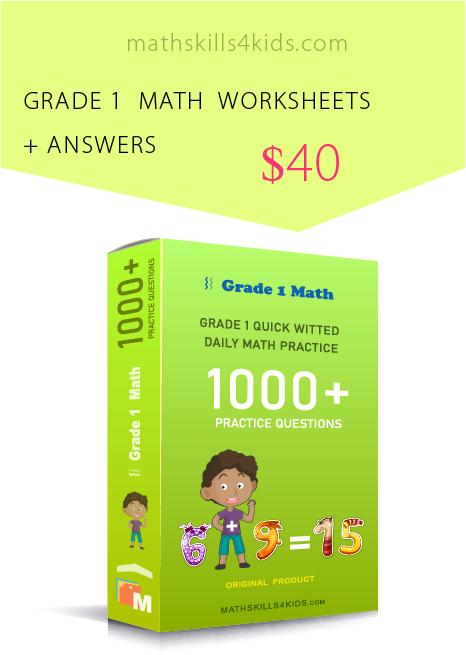
Buy Now... -
Estimate & rounding
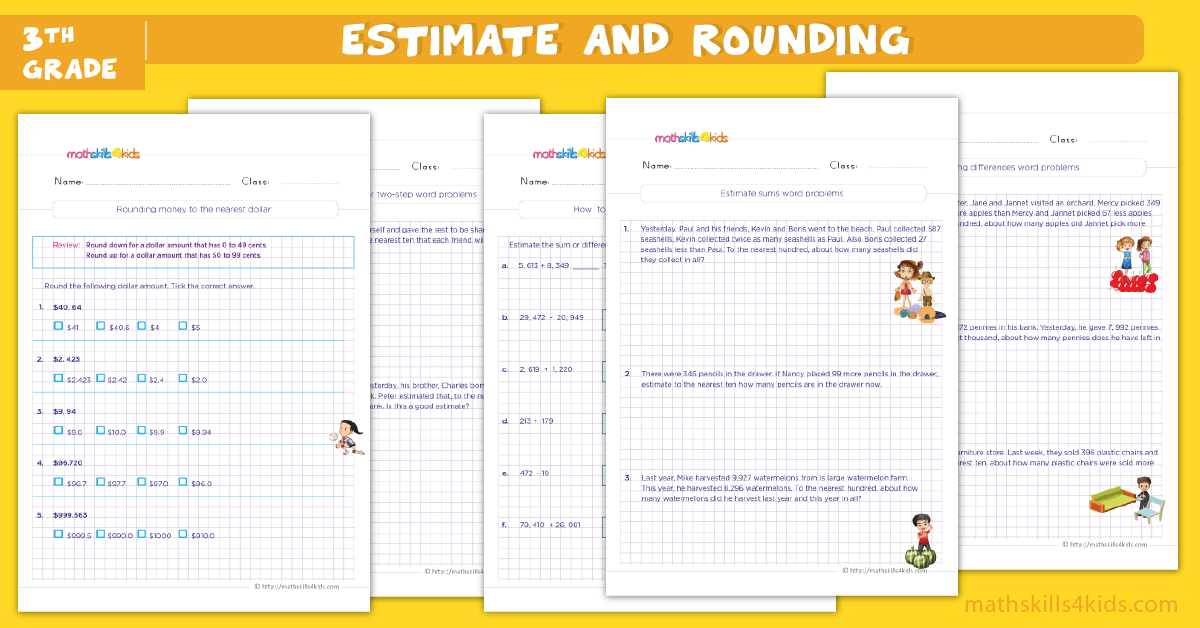
-
Logical reasoning
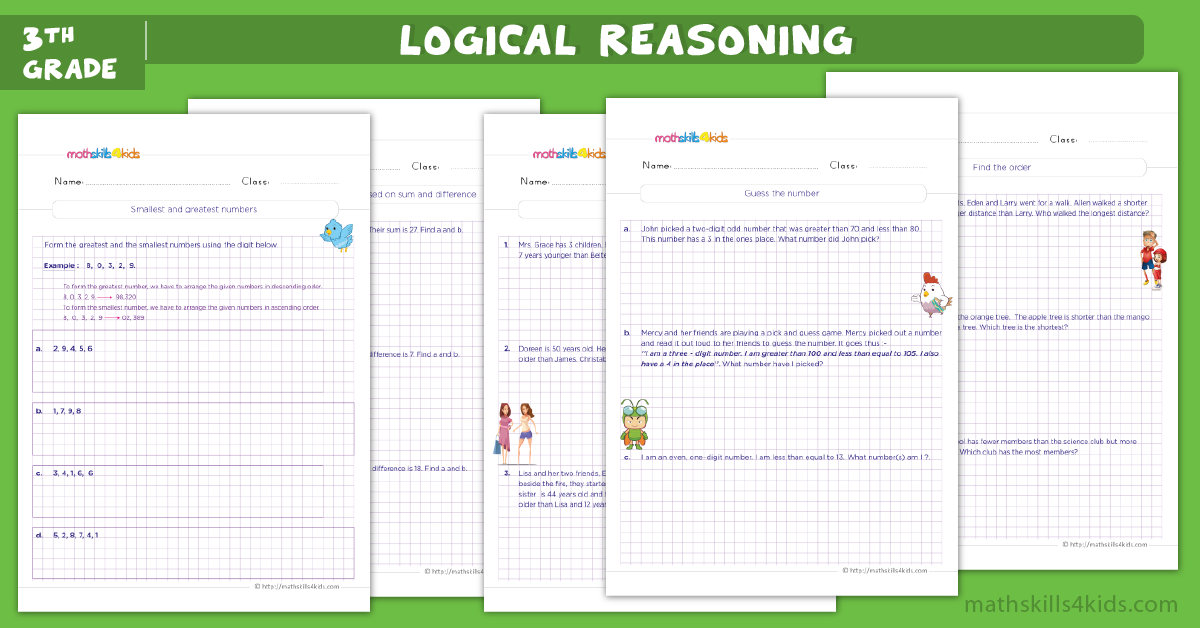
-
Patterns
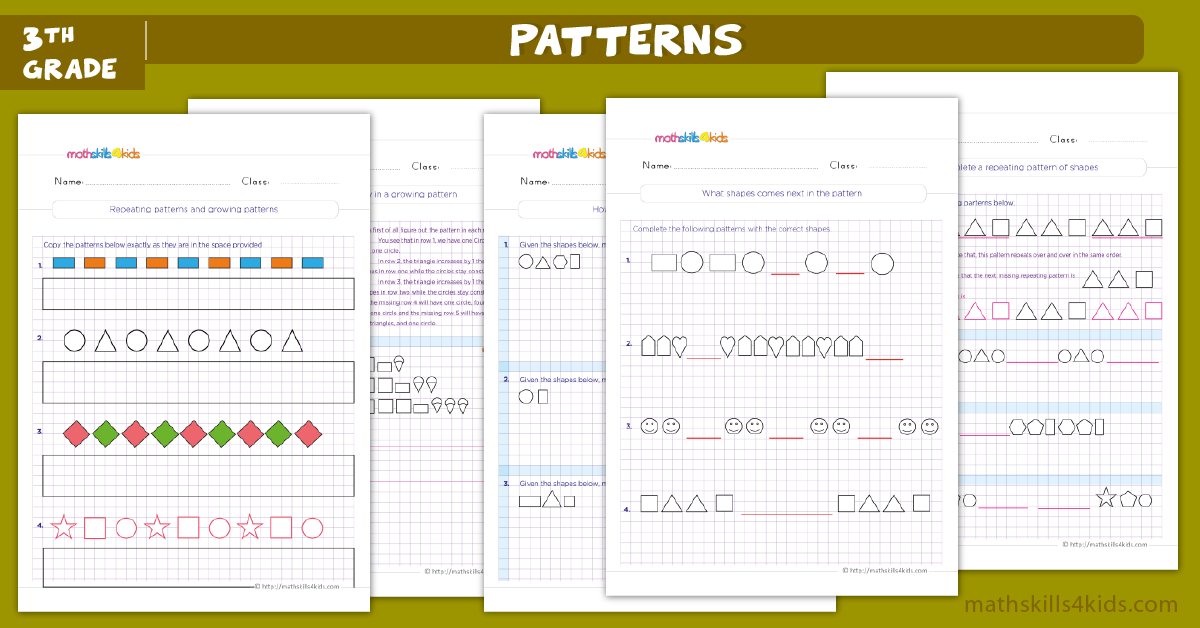
-
Money
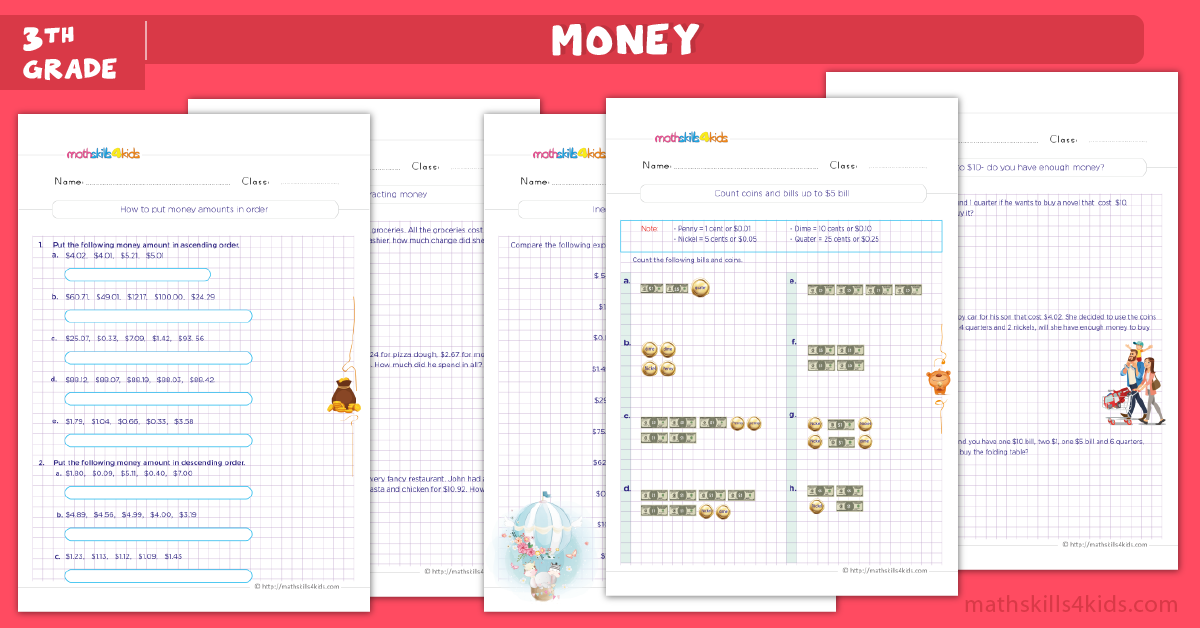
-
We hope you enjoyed this article and found it helpful. Try them out today, and don’t forget to CLICK THE SHARE BUTTON to allow others to benefit from this content!
3rd-grade math is an important stage in your kids' education, as it lays the foundation for more advanced math concepts and skills.
By providing your kids with some fun and educational math activities for 3rd graders, such as games, worksheets, and problem-solving challenges, you can help them practice and enjoyably improve their math skills.
You can also help your kids enjoy math by praising their efforts and progress, showing them how math is relevant and useful in everyday life, and making math fun and engaging.
By doing so, you can help your kids develop a positive attitude toward math and a lifelong love of learning.
